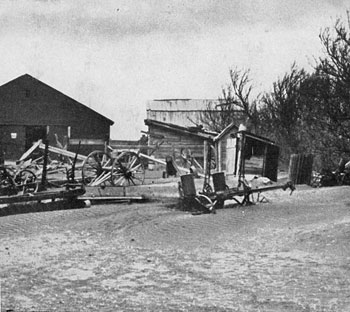
Dilapidated farmstead SHSND# 0351-04On July 18, 1934, hope was gone. The garden had burned up in temperatures that exceeded 100 degrees. The James River had gone dry and they feared losing the last water in their well if they gave it to the garden. The drought was now five years along and the subsoil moisture was entirely gone. (pp. 97, 98, 99, 101)
The spring of 1935 was not much more promising. Her first garden task was to clean out the Russian thistle (tumbleweed) from the garden fence. She planted excess seeds hoping that some would sprout. Spring moisture was good enough to sprout the peas. By August 7, she was complaining that it took until midnight to finish canning the peas that grew from the extra seeds she had planted. Her mother was ill that summer and the entire job of gardening, picking, and canning fell to Ann.
The Riebes elderly hired man, Joe, planted potatoes in 1935. He liked to plant by a cycle of the moon. Low did not explain what phase he needed, but it wouldn’t come until Memorial Day in 1935, so she had to plant some early potatoes in the regular garden so they would be ripe at the same time as the peas. Her father wanted new potatoes with fresh peas and Joe’s planting system would not allow for the combined harvest. (pp. 117, 118, 121, 122)




